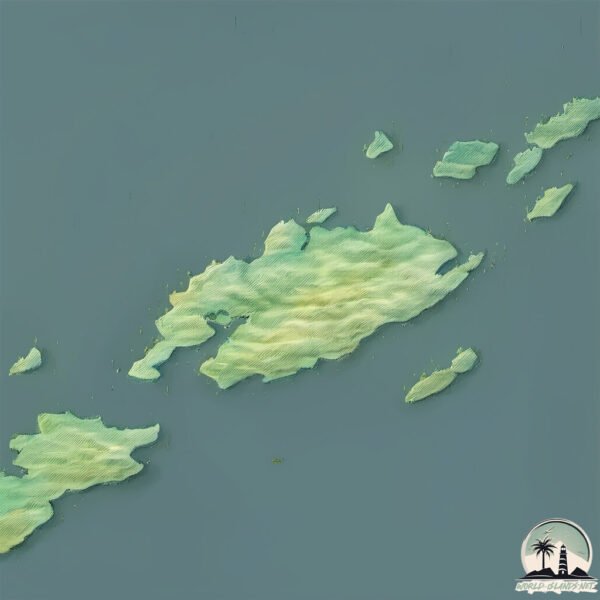Gilmour Island

Welcome to Gilmour Island, a Polar island in the Hudson Bay, part of the majestic Arctic Ocean. This guide offers a comprehensive overview of what makes Gilmour Island unique – from its geography and climate to its population, infrastructure, and beyond. Dive into the details:
- Geography and Size: Explore the island’s size and location.
- Climate and Weather: Weather patterns and temperature.
- Topography and Nature: Uncover the natural wonders of the island.
- Infrastructure and Travelling: Insights on reaching, staying, and making the most of your visit.
- News and Headlines: Latest News.
Geography and size of Gilmour Island
Size: 92.6 km²
Coastline: 88.9 km
Ocean: Arctic Ocean
Sea: Hudson Bay
Continent: North America
Gilmour Island is a Medium Island spanning 93 km² with a coastline of 89 km.
Archipel: –
Tectonic Plate: North America – Covers North America and parts of the Atlantic and Arctic Oceans, characterized by diverse geological features and varying levels of seismic activity.
The geographic heart of the island is pinpointed at these coordinates:
Latitude: 59.82067549 / Longitude: -80.04623258
Climate and weather of Gilmour Island
Climate Zone: Polar
Climate Details: Tundra
Temperature: Cold
Climate Characteristics: The tundra climate features long, extremely cold winters and short, cool summers. Vegetation is limited to mosses, lichens, and small shrubs due to the low temperatures and short growing seasons. Biodiversity is low, but some specialized species thrive.
Topography and nature of Gilmour Island
Timezone: UTC-05:00
Timezone places: America/New_York
Max. Elevation: 284 m
Mean Elevation: 120 m
Vegetation: Herbaceous Cover
Tree Coverage: 7%
The mean elevation is 120 m. The highest elevation on the island reaches approximately 284 meters above sea level. The island is characterized by Hills: Gently sloping landforms with rounded tops, having a maximum elevation between 200 and 500 meters. Hills contribute to a varied landscape on islands.
Dominating Vegetation: Herbaceous Cover
Comprising mainly of grasses, herbs, and ferns, these areas are common in prairies, meadows, and savannas, and can vary widely in species composition. Gilmour Island has a tree cover of 7 %.
Vegetation: 4 vegetation zones – Diverse Island
Four distinct vegetation zones mark these islands as ecologically diverse. They might feature varied landscapes such as forests, beaches, grasslands, and rocky areas. Such diversity reflects the island’s complex ecological interactions and varied habitats, which can support a rich array of wildlife and plant species.
Infrastructure and Travelling to Gilmour Island
Does the island have a public airport? no.
There is no public and scheduled airport on Gilmour Island. The nearest airport is Akulivik Airport, located 226 km away.
Does the island have a major port? no.
There are no major ports on Gilmour Island. The closest major port is HERON BAY, approximately 1411 km away.
The mean population of Gilmour Island is 0 per km². Gilmour Island is Uninhabited. The island belongs to Canada.
Continuing your journey, Pattee Island is the next notable island, situated merely km away.
David Gilmour - On An Island feat. Crosby & Nash (Remember That Night)



Canada is classified as Developed region: G7: Group of Seven – Major advanced economies, including Canada, France, Germany, Italy, Japan, the United Kingdom, and the United States. The level of income is High income: OECD.
News – Latest Updates and Headlines from Gilmour Island
Stay informed with the most recent news and important headlines from Gilmour Island. Here’s a roundup of the latest developments.
Please note: The data used here has been primarily extracted from satellite readings. Deviations from exact values may occur, particularly regarding the height of elevations and population density. Land area and coastline measurements refer to average values at mean high tide.
